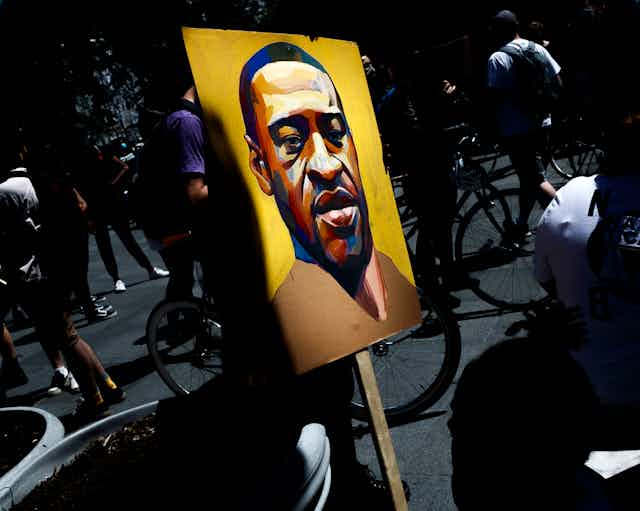George Perry Floyd, Jr. was murdered when Minneapolis police officer Derek Chauvin sank his knee into Floyd’s neck for nine minutes and 29 seconds. Video footage went viral within hours, helping to inspire protests against racism and police violence that lasted all the American summer of 2020.
But while the size of the protests was unprecedented, the activism of that summer had deep roots. Journalists across the United States and indeed the world, focused attention on that history of protest, as they had done during the 2014 police killings of Eric Garner, choked to death in New York, and Michael Brown, shot in Ferguson, Missouri.
Review: His Name Is George Floyd: One Man’s Life and the Struggle for Racial Justice – Robert Samuels and Toluse Olorunnipa (Penguin RandomHouse)
At the Washington Post, reporters and researchers devoted significant resources to a six-part series, George Floyd’s America. Now, two of those journalists, Robert Samuels and Toluse Olorunnipa, have expanded the work into a book: His Name Is George Floyd: One Man’s Life and the Struggle for Racial Justice.
When Floyd was born in 1973, 200,000 people were incarcerated in the US. By the time of his death, as Samuels and Olorunnipa point out, that number exceeded 2 million. The proportionate rate of growth of that number in Texas, where Floyd grew up, is even worse. African Americans are locked up at 4.75 times the rate of white Americans; Latinos at 1.3 times the rate.
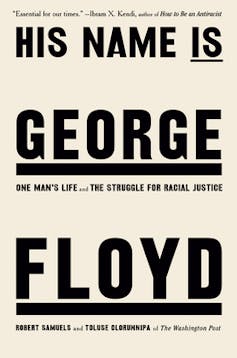
This extraordinary rate of incarceration is a political choice rather than a reflection of more violent criminals being locked up. Rates of incarceration increase with political conservatism and the increased rates of poverty, income inequality and unemployment that accompany that conservatism. Extensive investment in prisons, jails and police forces has created a self-perpetuating system that evolves by producing the very criminals it locks up.
This life-and-times biography poignantly depicts the mechanisms by which African Americans, especially male children and adults, become disproportionately the fodder for that system. A long history of racism, it might be said, funnelled George Floyd to prison.
Read more: The fury in US cities is rooted in a long history of racist policing, violence and inequality
The grandson of sharecroppers
Floyd’s two parents were both born to sharecroppers in North Carolina. The cycle of poverty in which they were trapped was not of their own making. Black Americans have been prevented from building wealth from the moment slavery ended.
Floyd’s great-great-grandfather, for example, who was born into slavery in 1857, amassed land worth $US30,000 in 1920, but his white neighbours stole it from him by a mixture of fraud underpinned by the threat of violence. That tale is absolutely typical for a majority of Black families in the US South.
The knock-on effects have been intensified by government policies that meant for generations, Black Americans had fewer opportunities for education; earned less even for the same work; and were prevented from buying property that would build wealth over generations.
Desperate for a better life for her three children, Floyd’s mother uprooted them to Houston, Texas, when Floyd was four. There, they lived in public housing in the segregated Third Ward.
Government policies that requisitioned homes from Black residents elsewhere in Houston had forced them into this section of the city. In the Cuney Homes development, known as “the Bricks,” even today the median income is US$15,538, well under half the national average.
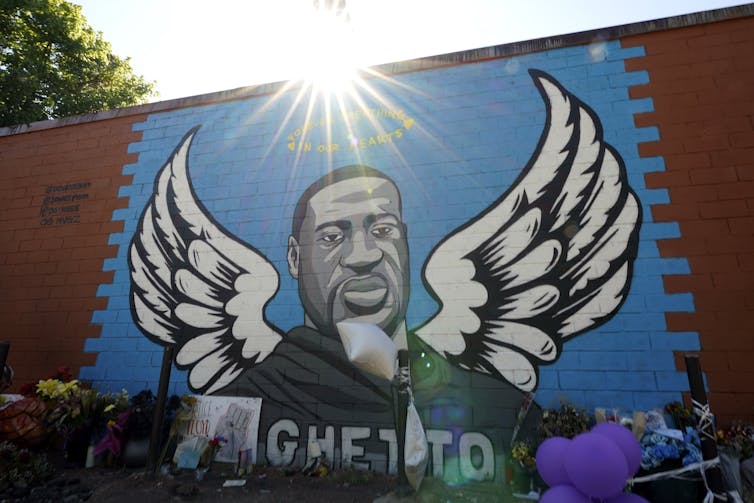
Floyd attended the local Jack Yates Senior High School, opened in 1926 when education was segregated by race and never the equal of other Houston schools catering to white children. As Floyd grew to 193 centimetres tall, he learned to offset the alarm that his size and colour induced in people.
He became self-deprecating and deliberately easy-going, charming people across generations everywhere he went. Excelling at football, he secured entry to college.
But Floyd’s dreams of playing pro football were stymied by his academic achievements. Never good at tests, Floyd fell behind by middle school and struggled to graduate high school. There were just not the resources in the schools to make up for living in poverty in an overcrowded flat with the responsibilities of caring for relatives.
After four years at two colleges, Floyd dropped out and returned to Houston. Not long after, he was arrested for the first time for selling drugs.
Samuels and Olorunnipa do an extremely good job of showing that at every node along the passage toward being turned into fodder for the prison-industrial complex, Floyd’s chance of escape was significantly less than that of a white man of the same age. Reading how Floyd’s options narrowed, it was impossible not to share his frustration and despair.
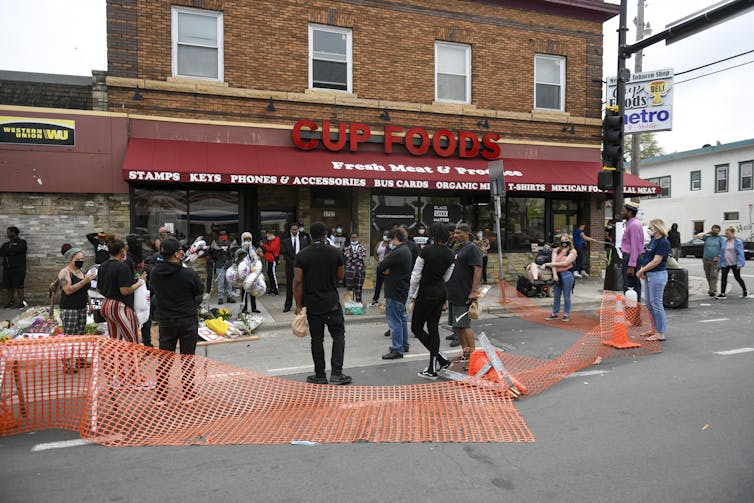
Forensic exposé of injustice
Quotas for arrests meant police sought the “low-hanging fruit” of petty drug dealing done on the streets. Misconduct charges for these police officers are common: the cop who arrested Floyd in 1997 for selling drugs was sacked in 2002 after being charged with theft and hampering arrest. The officer who arrested Floyd in 2004 was “later accused of falsifying charges in hundreds of drug cases, including the one involving Floyd.”
Chauvin himself had faced 29 charges of misconduct and internal investigations prior to murdering Floyd. (Only 18 appear on the city’s police internal affairs records.) But because records of “decertification” are patchy, such “wandering” officers can often get themselves rehired.
The officers can stay unaccountable by targeting impoverished men who, unable to afford lawyers, are more likely to accept plea deals. Floyd was never tried by jury; he rather accepted eight plea deals.
He knew that even if he got to court, the decision was unlikely to be positive because the state of Texas does not provide public defenders. Rather, the court pays for a private lawyer to defend those who can’t afford their own representation. Judges in Harris County, where Houston is located, more often than not will appoint lawyers who had donated to their election campaigns.
In 2007, police arrested Floyd for a violent assault on evidence provided by a dubious photo ID process. (It has since been improved.) Facing up to 40 years of prison, a reluctant Floyd accepted a plea deal for five.
Claustrophobia made Floyd’s time in prison difficult, and yet he discovered that none of the mental health, drug addiction, or education programs included in legislation such as the notorious 1994 Crime Bill, which sloshed billions of dollars into prison building, were available. As the authors point out, it was only after the opioid crisis hit white communities that such funds were expended. In short, whereas policymakers declared crack cocaine a crime problem, they saw opiate addictions, more commonly associated with white people, as an epidemic or public health emergency.
The man responsible for prosecuting the case against Derek Chauvin, Jerry Blackwell, knew well the racism inherent at every level of what we uncritically call “the criminal justice system.”
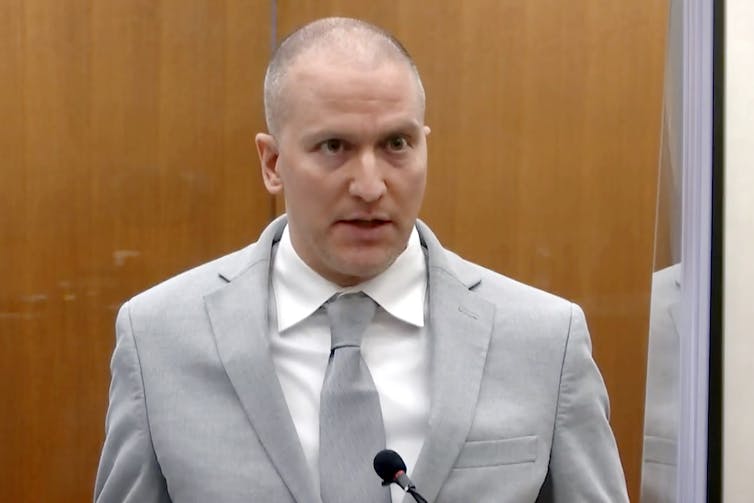
Blackwell anticipated the defence would claim that Floyd’s drug use or some physical anomaly was the reason he had died. He therefore required an independent medical examiner review the coronial findings into Floyd’s death.
That person, and the examiner who worked for the Floyd family in the civil case against the city of Minneapolis (which the city settled before trial for a record $US27 million), both questioned whether the autopsy had been conducted correctly. Specifically, they doubted whether the incisions made on Floyd’s body were sufficient to ascertain the cause of death. And, indeed, the defence claimed that Floyd’s drug use and a supposedly enlarged heart had contributed to his death.
This was not unique; as the authors report, in 2021 researchers found evidence that medical examiners “had misclassified or covered up nearly 17,000 deaths that involved police between 1980 and 2018”.
All this detail might make the book sound dull, but the research is woven lightly through the account of Floyd’s life so as to maintain momentum. We learn too about Floyd’s family, friends, girlfriends, and his young daughter Gianna. The authors bring to life Floyd’s ability to take people as he found them, underpinned by a deep Christian faith in God.
Activism
The final third of the book, which focuses on events after Floyd’s death, is also gripping. Even as we know the outcome, the twists and turns in the criminal case against Chauvin make for heart-in-the-mouth reading. Chauvin was convicted of murder and manslaughter and is serving a 22-and-a-half year sentence. And in early July a federal judge sentenced Chauvin to 21 years in prison for violating George Floyd’s civil rights – the sentence will be served concurrently.)
Read more: The sentencing of George Floyd’s killer has lessons for policing in Australia and New Zealand too
Even more striking is the depiction of the bravery of protestors in Minneapolis and of Floyd’s family members, especially his brother, Philonise Floyd, as they seized an opportunity they never wanted – as spokespeople for justice.
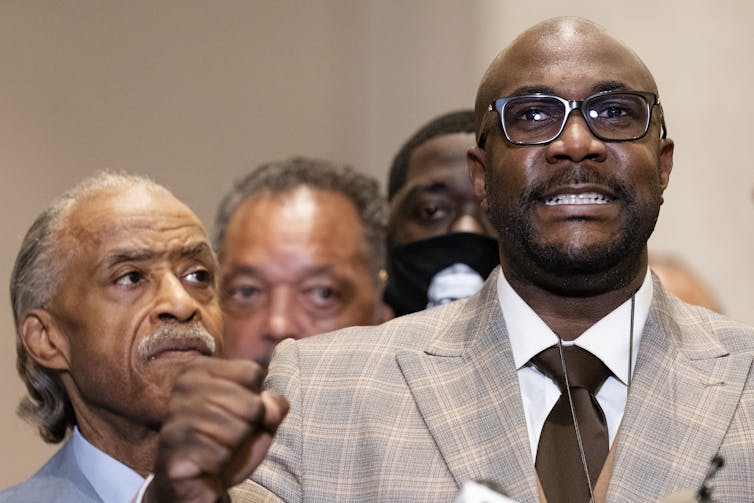
Joined by the civil rights veterans, the Reverends Jesse Jackson and Al Sharpton, Philonise campaigned hard for federal legislation to reform policing. Republican opposition to the hardest-hitting sections of the George Floyd Justice in Policing Act, introduced to Congress in February 2021 by Rep. Karen Bass, meant the bill foundered – and has still not been passed.
Unlike all the earlier sections of the book, the activism around police and legislative reform is not given quite the context it deserves. Although Samuels and Olorunnipa interviewed 400 people for their book, activists who have long campaigned against police brutality and for the dismantling of the entire criminal justice system in favour of a society built on equal distribution of resources, such as Angela Davis and Ruthie Wilson Gilmore, do not appear.
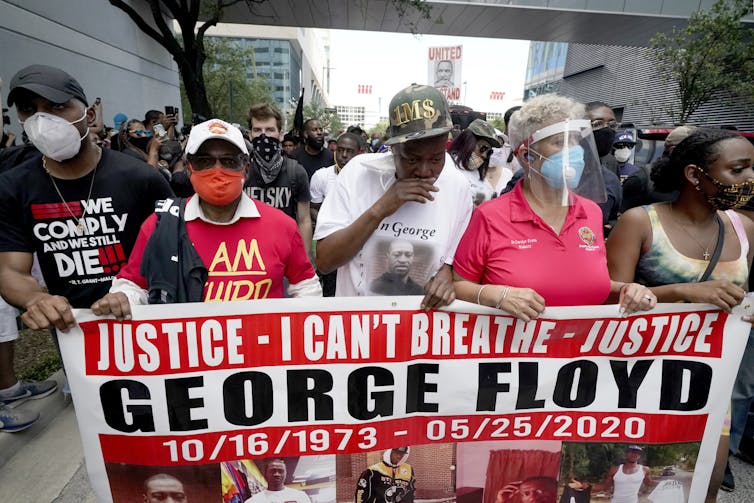
Nor is there much comment on the efficacy of prior efforts to reform the criminal justice system via legislation. Banning choke-holds, for instance, will not end police murders when Black lives are still not regarded as mattering as much as those of white people.
This criticism aside, His Name is George Floyd is a monumental achievement – a work of activism in itself.
Bringing Floyd vividly to life, it makes an impassioned and persuasive plea for the dignity and preciousness of life. The book’s cover deliberately evokes the posters held aloft during the 1968 workers’ strike in Memphis, Tennessee (when Martin Luther King, Jr. was killed), that proclaimed “I Am a Man.”
George Floyd was a man, too, who deserved a better life.

